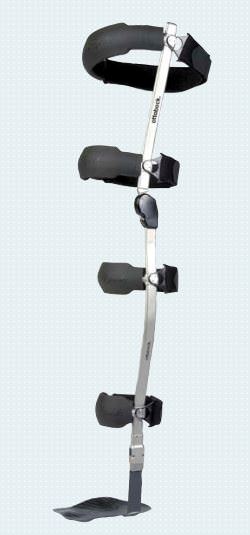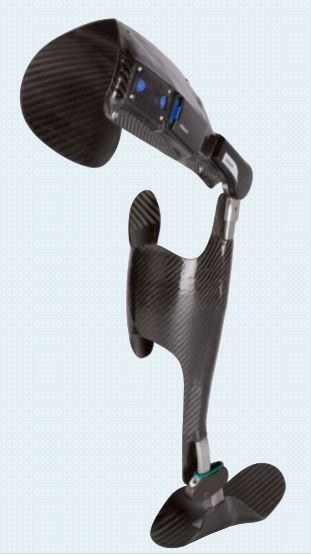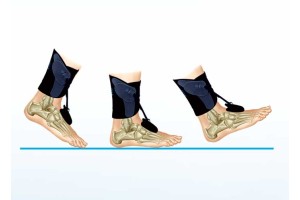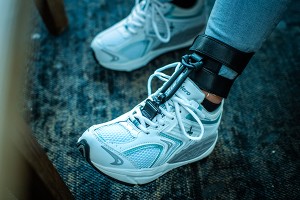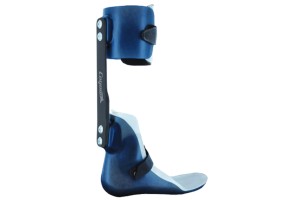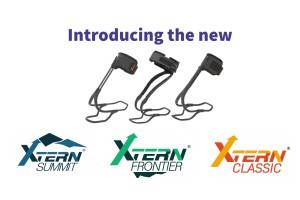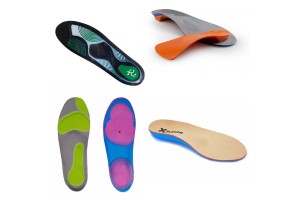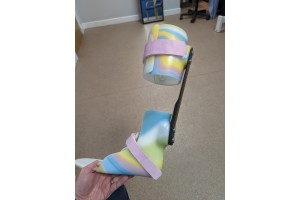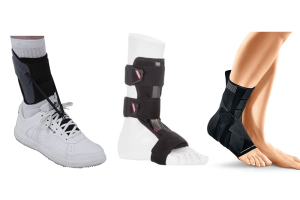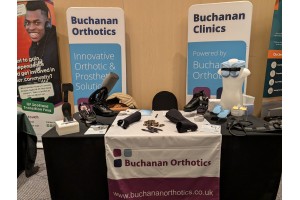Stance Control Orthoses (SCO)
The Buchanan Clinic is dedicated to achieving the best out comes for our patients as well as informing on potential treatments not always available on the NHS.
Generally speaking Stance control orthoses are not available on the NHS in Scotland unless there is special circumstances and they require the orthotist to have experience using this class of device to ensure an optimal outcome.
The gait cycle
The gait cycle is broken down into two main stages: Swing phase and stance phase.
- Swing phase is when the foot is off the ground and is swinging through till the foot comes back into contact with the ground.
- Stance phase is when the leg is in contact with the ground.
What is a stance control orthosis
Stance control orthoses are a class of device that controls the leg during the stance phase of gait. This is the period during the gait cycle when the foot is in contact with the ground
How does this differ to a normal Caliper / KAFO
It is common practice for a caliper / KAFO to be either locked or unlocked. A locked knee KAFO will hold the leg straight during the stance and swing phase of gait and will require to be unlocked in order to flex the knee. This is done manually by reaching down to the knee joints.
A free knee KAFO is always unlocked and allows flexion at the knee to occur during both the swing and stance phase of gait. Often the knee is controlled via the alignment of the brace to provide stability.
The advantage of a free knee is that during the swing phase of gait the knee can bend. Knee bend is helpful as it effectively shortens the leg allowing for ground clearance. If the knee does not flex during swing it will require other gait compensations such as vaulting or circumduction.
A stance control orthosis is the best of both worlds and will be locked during the stance phase but unlocked during swing to aid ground clearance and reduce the need for compensations.
What Stance control orthoses are available.
While there is not a huge choice with regards to componentry for these devices there are two main categories of stance control orthoses Mechanical / Cable operated and Electrically operated.
Mechanically Controlled
Cable controlled devices, as the name suggests involve a cable attached to the foot section that unlocks the joint at the correct point in the gait cycle. They require the ankle to be able to move towards dorsiflexion to enable the tension on the cable to be effective. It is not essential that the foot can make it into dorsiflexion only the it has some movement in that direction.
Ottobock Freewalk
This single sided lightweight Stance control orthosis is good when there is minimal deformity at the foot and ankle.
The Freewalk is similar to the UTX orthosis in design.
Becker Stride family
The Stride family from Becker Orthopaedic has a number of options with regards to components used and can be made in both plastic and carbon fibre. Unlike the freewalk they require a joint on either side of the knee. However, versions such as the safety stride do not require the knee to achieve full extension in order of the device to lock which provides increased safety. The Becker system also has the option of a gas strut to provide extension assist to aid the knee achieving full extension during the swing phase.
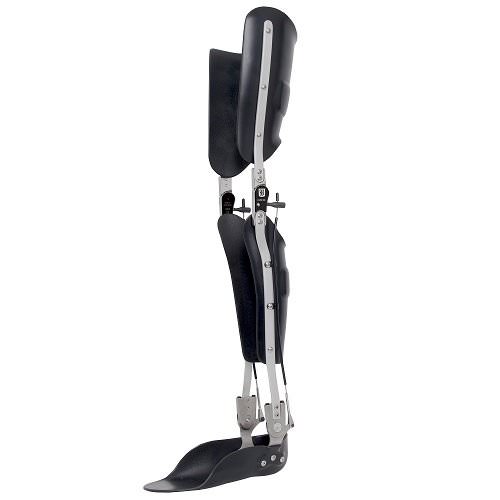
Electronically Controlled
Ottobock E-Mag Active
The Emag from Ottobock is an electronically controlled stance control orthosis. It uses electronics to determine when to unlock the knee joint to enable the knee to flex during the swing phase of gait.
As it is electronically controlled the locking mechanism is independent to the ankle so it does not require the ankle to move. This enables people with fixed ankles to use such a device who would be unable to use a cable operated device.
The E-Mag active is required to be made in carbon fibre and depending on weight and activity level can utilise unilateral joints.
Stance and Swing Control
Looking to the future there are emerging devices that control the knee during both the swing and stance phase of gait. This has the advantage of enabling the knee joint to slowly yield controlling the rate of knee flexion. They also have the advantage of being able to lock at any angle.
Assessment
In order to determine if a stance control device would be suitable for you it is important that a thorough examination is undertaken. It can be difficult to advise over the phone if you would be suitable however we may be able to give you an idea.
At the Buchanan Clinic our Orthotists are experienced in the use of Stance control orthoses and can help guide you as to the use of these orthoses
Contact us
Email: info@buchanan-clinic.co.uk
Call: 0141 440 1999
Address: 603 Helen Street, Glasgow, Scotland, G51 3AR
Online Booking: Buchanan Clinic Appointments

